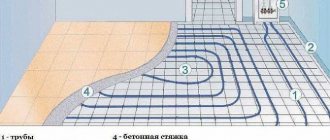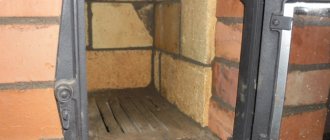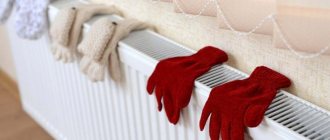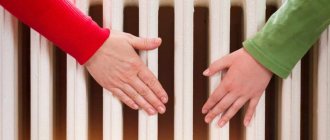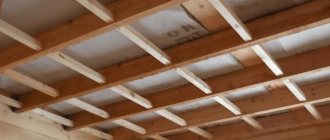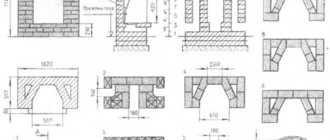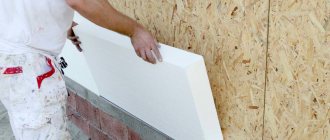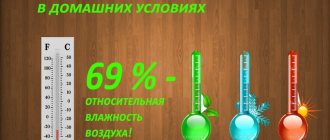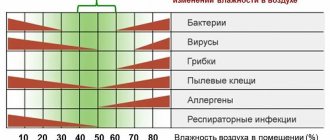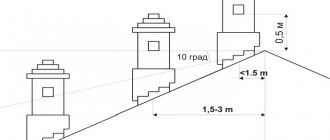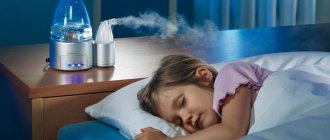Modern housekeeping › Technology › Microclimate ›
A person feels comfortable - 45–60% moisture at 20–22°C. For children, the atmosphere in the room is humidified to 70% at 20–24°C during the cold season. Indicators may vary depending on the purpose of the room. In basements for storing food, 85–90% is set at 2–5 ° C, in the attic – 55%, in the bathroom 65% is allowed. In stores, pharmacies, and museums, on average, 55% moisture is maintained at 16–25°C. At work, the indicator should not exceed 60% and fall below 40% at 20–22°C.
In winter, the atmosphere is dry. In the off-season, dampness appears. The most pleasant atmosphere is established in the warm season. To maintain a comfortable climate, ventilate rooms and install humidifiers or moisture absorbers.
The microclimate of the room affects health and performance. The optimal air humidity in the apartment is maintained depending on the purpose of the room. Dampness is acceptable in the bathroom, unlike the bedroom. A special climate must be created in the child’s room. Let's consider the standards for residential and non-residential premises.
How does the season affect humidity?
In winter, with batteries running and windows closed, the atmosphere becomes dry. During this period, peeling of the skin, cracks in furniture, and falling leaves of houseplants may occur.
In autumn, when the heating season has not yet begun, but the weather is cold outside, the humidity rises. There is a feeling of dampness due to the low temperature in the room with a sufficient amount of moisture.
Monitor your performance at any time of the year
In summer, the heat and amount of moisture are within normal limits. However, in rainy weather and in intense heat, the humidity increases. In the heat it becomes stuffy due to fumes.
If the effect of a bath is created, you feel a “lack” of air, open the windows. Ventilation in rainy weather or snow also helps combat dryness. If you feel thirsty or feel dry, increase the humidity using special humidifiers or containers of water. Radiators, absorbers, candles, and sun rays cope well with dampness.
Conclusions and useful video on the topic
How to protect your child not only at school, but also at home from microclimate violations. Advice from Dr. Komarovsky:
So, we have examined the standard parameters of humidity conditions in educational institutions. Fortunately, most often they are observed impeccably, which contributes to the formation of a healthy educational process.
But, even if you think that the rights of students are being violated, now you know how to correct this fact in any case and maintain their health, as well as ensure a comfortable pastime.
Write your comments, ask questions about the topic of the article - the contact block is located below.
Atmospheric humidity standards in a residential area
Each room has its own air humidity level. An acceptable ratio is considered to be 30–60% at 20–22°C. In the cold season, the limit is considered to be 45%; in summer, the amount of moisture should not exceed 65%. If the instruments show less than 30% at any time of the year, it is necessary to humidify the air; if more than 65%, a feeling of dampness appears.
The standards specified in the standards are written for designers and builders planning construction. Feelings may vary from person to person. Doctors advise keeping humidity at 45–60%, regardless of the time of year.
Note . Humidity standards for various rooms are specified in SanPiN 2.1.2.1002-00, GOST 30494-2011, SNiP 02/23/2003
Bedroom
In the room where they sleep, comfortable humidity is kept within 45–50% at 18°C.
Optimal temperature and humidity will ensure healthy deep sleep
The bedroom should be a little cool. It's worse to sleep in a stuffy room.
Find out how to increase indoor humidity yourself
Living room
In the common room, where the whole family often gathers, 45% humidity is maintained at 20°C. Consider the items that are in the living room. For books and furniture made of wood, 40–60% is considered acceptable. For rooms with TVs, computers and other running electrical appliances, keep the moisture at 50-60%.
Kitchen
Permissible humidity in the kitchen is 45% at 20°C. When cooking, especially in small kitchens, it is recommended to open the window slightly, even on a frosty day. To prevent steam from settling on objects, install a powerful hood.
Bathroom
Most bathrooms are made without a window, through which you can let in fresh air and dry the room. Therefore, it is important to install properly functioning ventilation. Be sure to leave the door open after showering. To prevent condensation from accumulating in living rooms, ventilate the premises.
In the bathroom and toilet, the humidity standard for living rooms is maintained - 45–60% at 22°C. The limit is considered to be 65%
Find out which dehumidifier to choose for your apartment
Children's room
The humidity in a small child's room should be kept within 55% at 21°C. During the cold season, it is allowed to increase the rate to 70% at 20–24°C.
The baby's immune system does not yet know how to resist pathogenic microorganisms. A dry nose allows bacteria and viruses to enter the body. In addition, in a dry climate, the child’s body quickly loses moisture, skin irritation and thirst appear.
The climate in the children's room should be soft and warm
At the same time, make sure that the room does not create a tropical atmosphere. A lack of fresh air occurs in a warm room with high humidity. A child in such conditions will sleep poorly and be capricious. Ventilate the room even in winter, when there is no baby in the room.
Material on topic! How to measure the humidity in a room
Cabinet
For books, wooden furniture, antiques, maintain low levels - 35-40% at 20°C. Humidity can be increased to 60% if you work at a computer and use other equipment indoors. Electrical appliances absorb large amounts of moisture. To regulate the microclimate, it is recommended to have indoor plants in the office.
Important . Carpets, soft toys, and furniture upholstery actively absorb moisture. However, due to its excess, mold occurs. Periodically dry furniture, mattresses, rugs.
Employer's liability
According to the Labor Code of the Russian Federation, the employer must provide the necessary working conditions for workers during an eight-hour work schedule .
Liability is established by Articles 192-195, 362 of the Labor Code of the Russian Federation and Art. 55 Federal Law of March 30, 1999 “On the sanitary and epidemiological welfare of the population”, and the punishment is regulated by the Code of Administrative Offenses - Art. 5.27 and art. 5.27.1.
An employer may receive an administrative penalty in the form of a fine for officials and individual entrepreneurs - 1-5 thousand rubles, for legal entities - 30-80 thousand rubles. for a primary violation, if repeated, the size increases and a temporary suspension of the company’s activities is possible.
Special cases for a private home
In the living rooms of the house, “apartment” parameters should be set - 45–60% at 20–22°C. A microclimate different from the rooms is maintained in the non-residential areas of the house - the cellar, attic, swimming pool.
Basement, underground, cellar for storing vegetables
In the warm basement, where the communications are located, the humidity is maintained at 75%. In the room where pickles, fresh vegetables and fruits are stored, the atmosphere should be cool. It is optimal to set 85–90% at 2–5°C.
To control the microclimate in the basement, provide ventilation
Make sure that condensation does not accumulate on the walls.
Attic
In warm attics, according to standards, humidity does not exceed 55%. High levels can lead to the collection of condensation, which will cause the formation of fungus on the roof and ceilings, as well as puddles and leaks into the living area. To prevent this from happening, provide waterproofing and ventilation.
Pool
According to sanitary standards, the parameters are kept within the range of 55–65%. Warming up the water in the pool depends on its purpose. For children it is maintained at 30–32°C, for athletes – 25–26°C. The air should be heated a couple of degrees more.
General requirements for the ventilation system
There are a number of ventilation requirements that must be met for proper operation.:
- Reliability of supporting structures on which the ventilation system will be installed. They must be resistant to vibrations.
- Joints should not be located in walls or partitions.
- All parts must be cleaned of dirt, rust and other foreign substances before installation.
- Easy operation, access to the system in case of breakdown.
- The ventilation system must be located in accordance with fire safety regulations.
- A low noise level is desirable, or better yet, no noise.
- Easy to operate and compact in size.
There are rules about what not to do, and they are aimed at users of the systems. This:
- Violation of the integrity of all elements.
- Closing the holes that are responsible for air inlet and outlet.
- Turning off ventilation during a fire.
- Disabling all components during repair work.
How are indicators measured and calculated?
The required humidity is calculated using the formula:
L = n×V , where:
- V is the volume of the area;
- n is the multiplicity established in SNIPs and GOSTs.
To calculate the volume of a room, use the formula:
V (m³) = A×B×H , where:
- A – width in meters;
- B – length;
- H – height.
Next, depending on the type of room and purpose of the room, the required indicator is taken from the multiplicity table and multiplied by the volume.
For example, V= 5(m) × 4(m) × 10(m): the volume of the room is 200 m³. Next, the air exchange rate is determined. Using the smoking room as an example: L = 10 (multiplicity of the smoking room) × 200. This turns out to be 2000 m³.
Permissible humidity in non-residential premises
To maintain performance, preserve the properties of drugs, and the shelf life of products, it is necessary to create separate microclimates. Humidity levels in non-residential premises depend on the purposes for which the space is used.
Office
In the office, 40–60% humidity at 20–22°C is acceptable to maintain performance.
The employer must take care of creating favorable conditions
At the same time, there should be no drafts.
Interesting! Which humidifier to choose
Garage
The norm is 50–70% at 5°C. Increased moisture leads to rusting. Therefore, ventilation must be installed in the garage.
Pharmacy
Normal humidity in a pharmacy is considered to be 40–65%. However, for most drugs the figures should not exceed 50%.
Shop
On average, stores maintain 16–25°C at 60–75%. The accuracy of the indicators depends on the type of product. For example, books require a drier climate (30–50%), clothing thrives at 40–50%, food is stored in refrigerators or halls at 60%. Ventilation must be present in retail premises.
Museum
To preserve exhibits, the museum maintains ideal conditions – 16–24°C with 55% humidity. An upward or downward bias of 5% is acceptable.
Additional artificial air humidification
There are a number of simple systems and devices that allow you to achieve standard air humidity values in office premises. This can be mechanical or ultrasonic spraying, which has a local effect, as well as isothermal humidification, which is associated with high costs.
The practice of recent decades has shown the real advantages of adiabatic air humidification systems in offices and residential premises. They are low-cost, low-noise, have automatic control and save financial resources for their owners. Systems are constantly being improved and their prices are falling. These humidifiers allow you to fully comply with all standards for the microclimate in the workplace.
Features of moisturizing mechanisms
Modern models of humidification devices are presented in a wide range. The algorithm for their operation is simple - the liquid with which a special tank is filled evaporates, thus saturating the surrounding room. Let's consider three main types of units:
- standard or mechanical. Powered by a fan located inside the system. It drives air through a specially mounted container of water inside. Thus, dust and particles are removed and humidification occurs. There is a small drawback: the device is very noisy, and the level of possible humidification reaches only 65%;
- steam version: the work is done as in a boiling kettle, in which the water has boiled. All this comes out as steam. You can use water from the central water supply, so-called hard water. The equipment is quite noisy and uses a lot of electrical energy. It is important to use it very carefully - the steam produced by the unit is very hot. It can leave a burn, leave damage on nearby surfaces;
- ultrasonic: water turns into steam. This happens due to the operation of the membrane plate. Its undeniable advantage: it is silent during the working process. Heating the liquid kills microorganisms in the atmosphere. Important: the liquid is poured only purified. It is important to regularly change cartridges to normalize the operation of the entire structure.
It is recommended to select a humidifier according to the microclimate of the room.
Was this article useful to you?
Maximum permissible concentrations of harmful substances in atmospheric air according to SanPiN in 2022
The list of pollutants in the atmospheric air in 2022 with the standards established by SanPiN 1.2.3685-21 is presented in the form of a table containing the names of pollutants (taking into account all possible synonyms and chemical formulas), maximum permissible concentrations of maximum one-time, average daily and average annual values, hazard class of the substance , the limiting indicator by which harmfulness is determined. This indicator characterizes the direction of action of a biological substance:
- reflex action (by influencing the receptors of the respiratory organs);
- resorptive effect (generally toxic, mutagenic, carcinogenic and other forms of exposure, including long-term ones).
The table shows standards for the most common air pollutants in populated areas of the Russian Federation in 2022.
| Name of substance | MPC | Hazard Class | ||
| Maximum one-time | average daily | average annual | ||
| Nitrogen dioxide | 0.20 mg/cub.m. | 0.10 mg/cub.m. | 0.04 mg/cub.m. | 3 |
| Sulfur dioxide | 0.50 mg/cub.m. | 0.05 mg/cub.m. | — | 3 |
| Carbon oxide | 5.00 mg/cub.m. | 3.00 mg/cub.m. | 3.00 mg/cub.m. | 4 |
| Suspended solids | 0.50 mg/cub.m. | 0.15 mg/cub.m. | 0.075 mg/cub.m. | 3 |
| Sulfuric acid | 0.30 mg/cub.m. | 0.10 mg/cub.m. | 0.001 mg/cub.m. | 2 |
| Ammonia | 0.20 mg/cub.m. | 0.10 mg/cub.m. | 0.04 mg/cub.m. | 4 |
| Formaldehyde | 0.05 mg/cub.m. | 0.01 mg/cub.m. | 0.003 mg/cub.m. | 2 |
| Lead | 0.001 mg/cub.m. | 0.0003 mg/cub.m. | 0.00015 mg/cub.m | 1 |
| Benzene | 0.30 mg/cub.m. | 0.06 mg/cub.m. | 0.013 mg/cub.m. | 2 |
Protection of atmospheric air in populated areas according to SanPiN in 2022
The protection of atmospheric air in the Russian Federation according to SanPiN in 2022 is carried out at the legislative level and is aimed at ensuring a favorable human environment, preserving health, and preventing environmental pollution. In 2022, a number of documents aimed at implementing environmental protection measures came into force. The main document regulating the requirements for ensuring atmospheric air quality is SanPiN 2.1.3684-21. When introducing new types of products or technologies, the document instructs existing enterprises to justify their safety and develop methods that allow them to monitor the state of atmospheric air in 2022.
Attention
In accordance with the new SanPiN rules, substances for which EDUs or MACs have not been developed are prohibited from being released into the atmosphere in 2022.
SanPiN provides a clear definition of an object that is a source of environmental impact and establishes the mandatory implementation of measures aimed at reducing the harmful impact on the atmospheric air as part of the implementation of the action plan.
Nuances
Generalized requirements for compliance with standards for the content of harmful substances in various environments, combined into two global documents in the field of sanitary legislation (SanPiN 2.1.3684-21 and SanPiN 1.2.3685-21), allow us to assess the quality of the human environment from different perspectives. Physical, chemical, biological factors and their standards are highlighted in comparative tables, taking into account the types of premises (industrial, residential, public) or spaces (sanitary protection zone, residential zone). All this simplifies the work with documentation and contributes to the organization of environmental control.
Comments Showing 0 of 0
Air recirculation according to SanPiN in 2022
The use of bactericidal recirculators makes it possible to destroy up to 90-99% of pathogens in the air indoors. In connection with the spread of the new coronavirus infection, sanitary and epidemiological rules were approved aimed at preventing the dangerous disease. Section VI SP 3.1.3597-20 is devoted to the organization of air disinfection for preventive purposes. In 2022, it is recommended to use recirculators with UV radiation and electrostatic precipitators for cleaning and disinfecting air in rooms where people are present.
Folk remedies
There are folk means of measuring humidity. There are several of them:
- All you need is a simple glass of cold water. The water temperature should not exceed 5 degrees. The filled glass should be placed in the room, away from radiators and other heating devices. In 10 minutes. it should be checked: the appearance of condensation indicates high humidity, fogging indicates low humidity. If neither one nor the other is present, then the indicator is normal. The method is suitable for the most general analysis of the microclimate of a home.
- You will need a regular thermometer and a cotton pad. First, the room temperature is measured. Then a cotton pad or any other absorbent material is moistened and wrapped around the thermometer. The difference between the readings of room temperature and temperature with moisture will be the actual humidity parameter. To verify the indicator, there is an Assman table.
- You need to find a spruce cone and leave it in the room. After some time, its scales will either open, which indicates low humidity, or shrink tightly, which indicates high humidity.
There are signs by which you can determine low humidity without the use of special means. This is the quick drying of wet towels and the rapid evaporation of water from dishes away from heaters.
For more accurate measurements, you should use special technical means.
